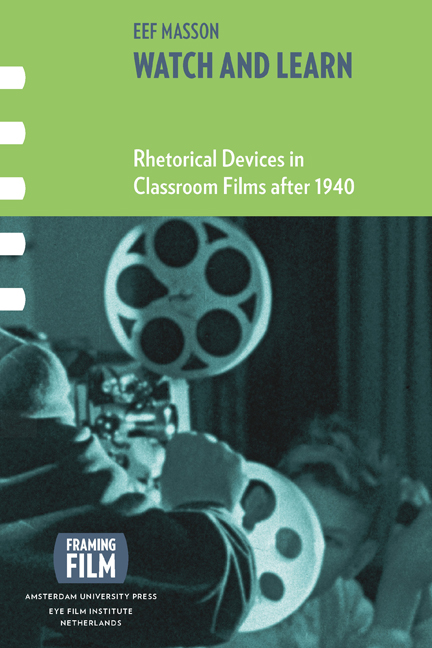2 - Classroom Film Use and the Pedagogical Dispositif
Published online by Cambridge University Press: 20 January 2021
Summary
INTRODUCTION
In the previous chapter I discussed how NOF, like similar bodies elsewhere, tried to influence its users’ conception of what constituted a good teaching film, and of how this tool should ideally be used. I suggested in the process that the institute's efforts in this area should not be seen as the result of a philanthropic impulse, but as an act of self-preservation: an attempt to ensure the continuation of its own activities. By teaching potential subscribers the difference between what was appropriate for classroom viewing and what was not, it basically gave them the reassurance that the film medium was indeed suitable for educational use, and therefore, that the services it provided warranted the schools’ membership.
Earlier on I also stressed that my choice of corpus – and by implication, of the NOF itself as a model case – is inspired mainly by pragmatic considerations. My interest in the collection, I said, is due primarily to its status as an object of usage: the fact that it was subject to a number of very specific screening practices. Yet as it turns out, the day-to-day use of NOF's films is a domain which the institute's normative writings seem to block from view. If the texts of handbooks and brochures can tell how the material concerned was supposed to be shown, they do not provide evidence of compliance with those rules. Topical specifications and formal benchmarks can be checked against the material which the institute distributed; user advice, in contrast, cannot be matched with anything ‘real’. In addition to this, first-hand reports on the actual circumstances of the films’ viewing are remarkably scarce. Yet even so, it is possible to make some statements on the ways in which classroom films were used – if not on the basis of direct evidence, then by means of deduction.
First, however, I want to briefly address the question of how the institute's product was received. In doing so, I can rely once again on the material which I discussed previously. NOF's publications, after all, not only constitute a record of the foundation's marketing strategy. In the absence of actual testimonies, they also serve as a source of information on the medium's reception by the audience they addressed.
- Type
- Chapter
- Information
- Watch and LearnRhetorical Devices in Classroom Films after 1940, pp. 99 - 125Publisher: Amsterdam University PressPrint publication year: 2012



